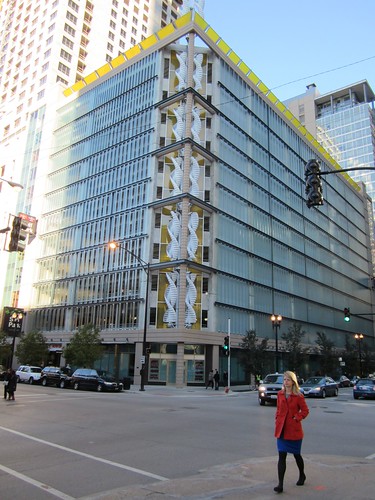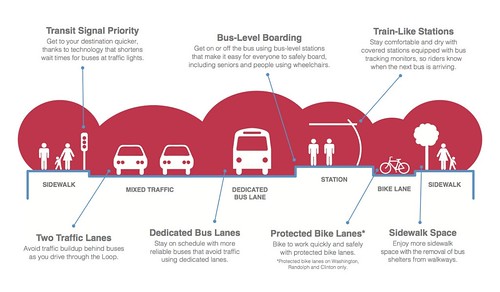Veteran Sun-Times reporter’s Fran Spielman’s recent piece on Mayor Emanuel’s plan to raise the city’s parking garage tax was a classic example of windshield-perspective journalism.
As part of his 2015 budget, Emanuel has proposed raising the parking tax by 10 percent on weekdays and 11 percent on weekends, to 22 percent and 20 percent, respectively. Spielman reported. The mayor hopes the hike will generate an additional $10 million, which would be earmarked to hire 80 new employees for year-round pothole repair crews.
The increased garage tax “is not the only hit motorists will be asked to absorb in 2015,” Spielman wrote. The budget would also raise the tax paid by Chicago residents who lease their cars from eight to nine percent. That increase is expected to generate $60 million in additional revenue.
This would be the third time Emanuel has tweaked the garage parking tax since he took office in 2011. His first budget included a $2 surcharge for weekday garage parking, which the mayor referred to as a “congestion fee.” In 2013, he changed the parking tax from a sliding scale to a fixed percentage, Spielman reported.
Predictably, downtown Alderman Brendan Reilly and Marc Gordon, president of the Illinois Hotel and Lodging Association, are griping that making it a little more expensive to drive downtown would have a chilling effect on local commerce. Gordon has said the same thing before each previous parking tax hike.
“[The garage parking tax is a popular punching bag for the mayor, in part, because it’s part of a larger plan to discourage driving by building protected bike lanes and bus rapid transit lanes that shrink the number of lanes available for passenger vehicles,” Spielman wrote. Here we see the tired “war on cars” rhetoric that’s all too common among mainstream news sources.
The purpose of street reconfigurations that make room for PBLs and dedicated bus lanes is not to stick it to motorists. For example, converting a mixed-traffic lane to a two-way protected bikeway on Dearborn created a safe place for north-south Loop bike traffic. It also reduced speeding on a street that formerly had capacity for 40,000 motor vehicles a day but only carried about 13,000.
The Loop BRT project, slated to break ground this spring, is a strategy to move more people, not just motor vehicles, efficiently through downtown. After all, buses represent only four percent of vehicles moving through the Loop, but carry 47 percent of people traveling in vehicles. Converting a few mixed-traffic lanes on Washington and Madison to bus lanes and island stations is predicted to save an average of 7.5 minutes on the trip across the Loop for the nearly 30,000 workers and visitors who ride buses on these streets each weekday.
Even if Emanuel’s ulterior motive behind the parking garage tax hike was to reduce the amount of downtown driving, it’s questionable whether this measure would have the desired effect. Widening the price gap between metered on-street spaces and garage parking leads more people to cruise the streets looking for curbside spots.
On the other hand, the new tax would make it less profitable to build and operate parking garages. Encouraging developers to use valuable downtown land for more productive purposes like housing and retail, rather than warehousing cars, would be an excellent thing for the future of the city.






